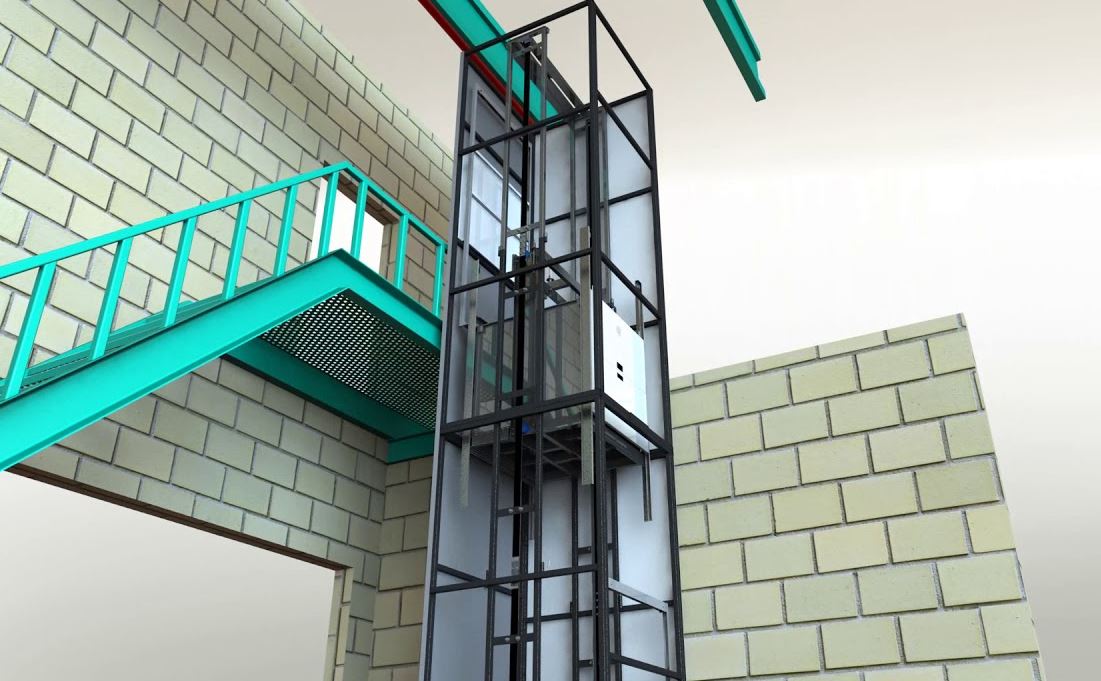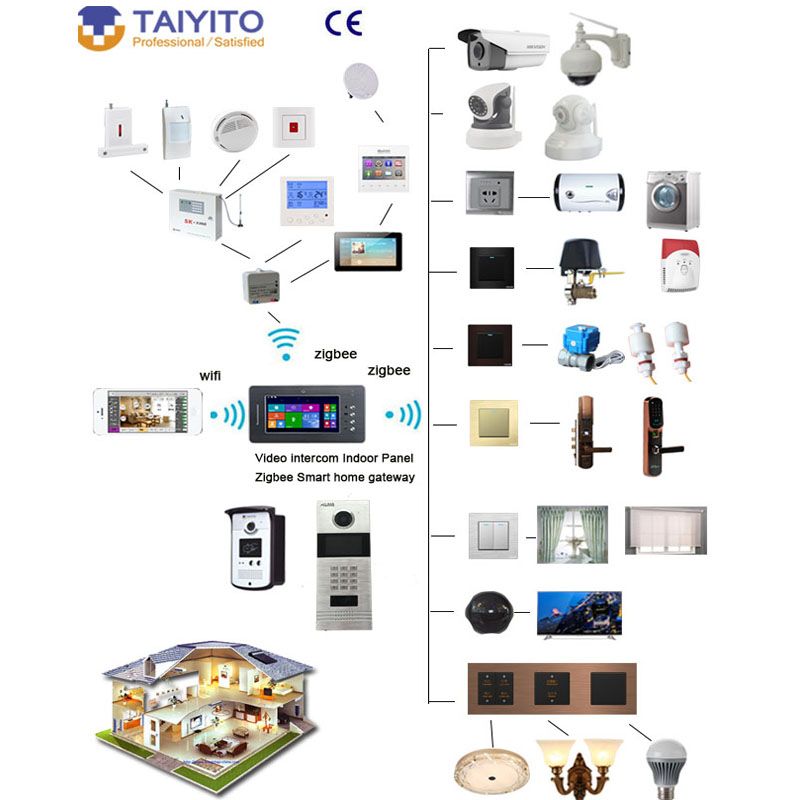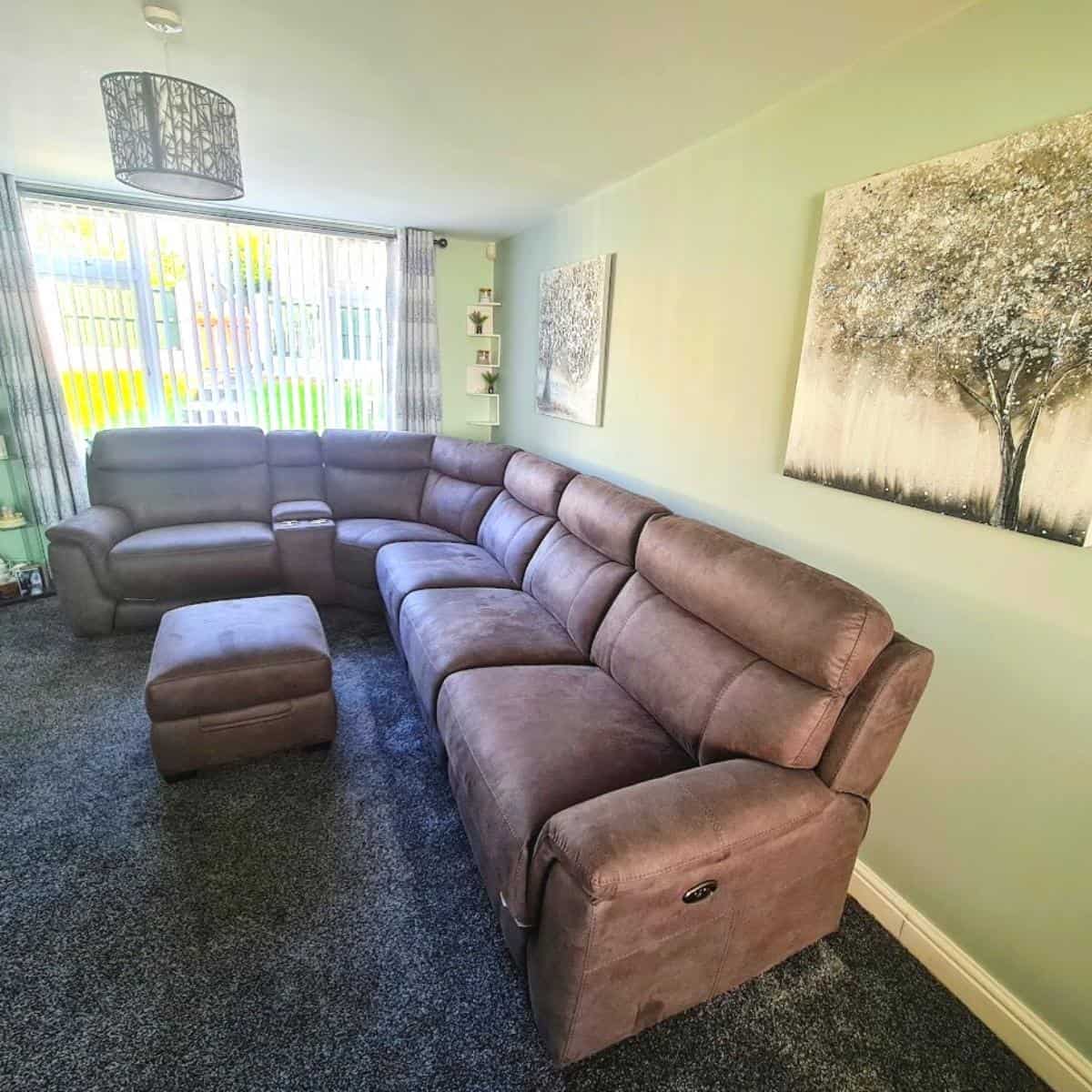Integrating smart home technology into traditional interior styles presents a unique design challenge: seamlessly blending modern functionality with established aesthetics. This exploration delves into the potential conflicts and harmonious solutions, offering strategies for discreet integration and showcasing examples of successful implementations. We’ll examine how to select devices that complement, rather than clash with, the character of styles like Victorian, Farmhouse, Colonial, Craftsman, and French Country, ensuring technology enhances, not replaces, the charm of traditional homes.
The journey involves understanding the nuances of each traditional style – from their color palettes and materials to the emotional responses they evoke – and then strategically incorporating smart home devices without compromising the integrity of the design. We will cover practical methods for concealing wiring, choosing compatible devices, and employing camouflage techniques to create a cohesive and visually appealing living space that balances both form and function.
Defining Traditional Interior Styles and Their Characteristics: Integrating Smart Home Technology Into Traditional Interior Styles
Traditional interior design styles evoke a sense of history, craftsmanship, and enduring elegance. They often utilize natural materials, rich textures, and classic furniture forms to create spaces that feel both comfortable and sophisticated. Understanding the key features of these styles is crucial for homeowners seeking to incorporate their timeless appeal into their homes.
Traditional Interior Design Styles: A Comparative Overview
The following table summarizes five distinct traditional interior design styles, highlighting their defining characteristics, color palettes, and common materials. These styles, while sharing a common thread of classic aesthetics, offer diverse options for creating unique and personalized living spaces.
| Style Name | Defining Characteristics | Color Palettes | Common Materials |
|---|---|---|---|
| Victorian | Ornate details, rich fabrics, dark wood, layered textures, eclectic mix of furniture styles. | Deep reds, burgundies, emerald greens, golds, and dark blues. | Dark wood (mahogany, walnut), velvet, brocade, ornate plasterwork, marble. |
| Farmhouse | Rustic charm, exposed beams, natural materials, simple lines, vintage accents. | Creams, whites, muted blues, greens, and browns. | Wood (reclaimed wood, pine), stone, linen, cotton, metal. |
| Colonial | Simple elegance, symmetry, classical proportions, formal furniture, historical accuracy. | Neutral tones (cream, beige, ivory), with pops of deep blues, greens, or reds. | Wood (cherry, mahogany, pine), marble, brass, textiles with traditional patterns. |
| Craftsman | Handcrafted details, natural materials, low-profile furniture, built-in storage, earthy tones. | Warm browns, greens, oranges, and muted yellows. | Wood (oak, chestnut), stone, leather, wrought iron, stained glass. |
| French Country | Rustic elegance, distressed finishes, floral patterns, light and airy feel, vintage accents. | Soft pastels (lavender, rose, pale yellow), creams, and muted greens. | Wood (light oak, pine), limestone, wrought iron, linen, toile fabrics. |
Space Utilization, Furniture, and Decorative Elements Across Styles
Each traditional style approaches space, furniture, and decorative elements differently. Victorian style often employs densely furnished rooms, reflecting a sense of abundance. Farmhouse style, in contrast, emphasizes open spaces and functional furniture. Colonial style prioritizes symmetry and balanced proportions in room layout, often featuring formal furniture arrangements. Craftsman style incorporates built-in storage and emphasizes the functionality of furniture within the space.
Integrating smart home technology into traditional interiors requires careful consideration, ensuring seamless functionality without compromising aesthetic appeal. A key area to explore is the home office, and for this, we recommend checking out this guide on designing a smart home office with ergonomic and stylish furniture for inspiration. By thoughtfully incorporating smart features, even a classic study can benefit from modern convenience while maintaining its timeless charm.
French Country style uses light and airy spaces, incorporating vintage furniture and decorative elements for a relaxed, lived-in feel.
Emotional Responses Evoked by Traditional Interior Styles
Victorian style often evokes feelings of grandeur, richness, and perhaps even a touch of nostalgia. Farmhouse style tends to inspire feelings of warmth, comfort, and rustic charm. Colonial style projects an air of sophistication, formality, and historical significance. Craftsman style evokes feelings of warmth, simplicity, and handcrafted quality. French Country style creates a sense of relaxed elegance, romance, and a touch of whimsical charm.
Smart Home Technology Integration Challenges
Integrating smart home technology into traditional interiors presents a unique set of challenges. The inherent styles and aesthetics of traditional design often clash with the modern, sometimes minimalist, nature of smart devices and their necessary infrastructure. Successfully blending these two worlds requires careful planning and a keen eye for detail.The primary hurdle lies in the inherent conflict between the sleek, often minimalist, design of smart home technology and the ornate, richly textured aesthetics typical of traditional homes.
Traditional design prioritizes craftsmanship, natural materials, and a sense of history, while smart home technology frequently features stark lines, plastic casings, and displays that can appear jarring in a period setting. Furthermore, the installation and operation of smart home systems often necessitate compromises in the integrity of original architectural features.
Aesthetic Conflicts Between Smart Home Devices and Traditional Design Principles
The visual intrusion of smart home devices can disrupt the carefully curated ambiance of a traditional home. For example, a large, modern smart speaker might look out of place nestled amongst antique furniture and period-appropriate décor. Similarly, the exposed wiring required for smart lighting systems can clash with the elegance of crown molding and detailed woodwork. The glossy surfaces and bright displays of some smart devices can appear incongruous against the muted tones and natural textures favored in traditional settings.
A jarring juxtaposition could arise, for example, if a sleek, metallic smart thermostat is installed on a beautifully crafted, antique wooden fireplace mantel. The overall harmony of the room’s visual composition can be significantly impacted by such incongruities.
Challenges in Concealing Smart Home Technology in Traditional Settings
Concealing the technological infrastructure of a smart home within a traditional setting presents significant logistical difficulties. Traditional homes often lack the readily accessible wall cavities and pre-installed wiring conduits that are common in newer constructions. Running new wiring for smart lighting, speakers, and other devices can be disruptive, expensive, and potentially damaging to the historical integrity of the building.
The discreet placement of hubs and other central control units can also prove challenging, requiring creative solutions to avoid compromising the aesthetic appeal of the space. For example, cleverly disguised storage solutions or custom-built cabinetry might be necessary to seamlessly integrate these essential components into the existing design scheme.
Integrating smart home technology into traditional interiors requires careful consideration; the key is seamless integration without compromising the aesthetic. A crucial aspect of this process involves understanding how to achieve a sustainable and smart home interior design, as detailed in this helpful guide: achieving a sustainable and smart home interior design. By focusing on energy-efficient smart devices and mindful material choices, we can create smart homes that are both stylish and environmentally conscious, enhancing the charm of traditional design elements while embracing modern technology.
Examples of Technological Features Clashing with Traditional Ambiance
Imagine a beautifully restored Victorian parlor, complete with intricate plasterwork, antique furnishings, and rich velvet drapes. The introduction of a large, brightly lit smart display screen in the center of the room would dramatically alter the mood, disrupting the serene and intimate atmosphere. Similarly, a minimalist, metallic smart lighting system might feel stark and cold against the warmth of a traditional fireplace and the soft glow of antique lamps.
Integrating smart home technology into traditional interiors requires careful consideration to maintain aesthetic harmony. Successfully blending modern tech with classic style hinges on choosing devices that complement, not clash with, your existing décor; this is where understanding how to choose smart home devices for a cohesive interior, as detailed in this helpful guide: how to choose smart home devices for a cohesive interior , becomes crucial.
By selecting devices that are subtly integrated, you can enjoy the convenience of smart technology without sacrificing the charm of your traditional home.
The subtle, nuanced lighting often found in traditional homes, achieved through carefully placed lamps and sconces, might be compromised by the potentially harsh and uniform illumination of smart lighting systems, unless meticulously programmed to replicate the desired ambience. The delicate balance of a traditional interior’s aesthetic can be easily upset by the inappropriate introduction of technology.
Seamless Integration Strategies
Integrating smart home technology into a traditional interior doesn’t necessitate a jarring clash of styles. With careful planning and execution, technology can enhance the existing aesthetic, rather than overshadowing it. The key lies in selecting appropriate devices and implementing discreet integration strategies that maintain the integrity of the traditional design.Successful integration requires a mindful approach, balancing functionality with preservation of the home’s original character.
This involves choosing devices that blend seamlessly with the existing décor and employing installation methods that minimize visual disruption. The following strategies offer practical approaches to achieving this harmony.
Discreet Smart Home Integration in a Victorian Living Room
The Victorian era is known for its ornate details and rich textures. Integrating smart technology requires a delicate hand to avoid disrupting this aesthetic. Below are three approaches to seamlessly integrating smart home technology into a Victorian-style living room, focusing on minimizing visual impact while maximizing functionality.
Integrating smart home technology into traditional interiors can enhance both comfort and aesthetics. The key is thoughtful placement and selection of devices that complement, rather than clash with, existing decor. Achieving this luxurious look doesn’t require breaking the bank; check out this guide on creating a luxurious smart home interior on a budget for practical tips.
By prioritizing functionality and carefully choosing smart devices, you can seamlessly blend modern technology with timeless style in your traditional home.
- Approach 1: Concealed Integration within Existing Architectural Features
- Materials: High-quality wood molding, custom-built cabinetry matching existing woodwork, fabric-covered speaker grilles that blend with upholstery.
- Placement: Smart speakers and hubs concealed within built-in bookshelves or behind decorative moldings. Smart lighting controllers hidden within wall cavities or behind existing light fixtures. Power outlets integrated into baseboards.
- Camouflage Techniques: Use custom-built cabinetry to seamlessly integrate smart home equipment, matching the wood finish and style to the existing woodwork. Fabric-covered speaker grilles can effectively mask smart speakers while still allowing for sound diffusion. Use recessed lighting to conceal smart lighting controllers.
- Approach 2: Integration Using Period-Appropriate Accessories
- Materials: Antique-style wall sconces with integrated smart lighting, vintage-looking dimmer switches, table lamps with integrated smart bulbs, and carefully chosen smart home devices housed in period-appropriate boxes or cases.
- Placement: Smart lighting integrated into existing wall sconces or table lamps. Smart plugs disguised as antique-style power adapters. A centrally located smart hub in a decorative box that resembles a vintage music box or jewelry case.
- Camouflage Techniques: Choose smart home devices that aesthetically complement the Victorian style, either through their design or by cleverly concealing them within period-appropriate containers. Vintage-looking dimmer switches will seamlessly integrate with the overall design.
- Approach 3: Minimalist Integration with Focus on Functionality
- Materials: Small, unobtrusive smart devices (e.g., compact smart plugs, mini smart speakers), neutral-colored wiring, and custom-made cable concealers that match the room’s color scheme.
- Placement: Strategically placed smart plugs near essential appliances. A single, centrally located smart hub concealed in a discreet location, perhaps behind a piece of furniture.
- Camouflage Techniques: Use neutral-colored wiring and cable concealers to minimize visual clutter. Opt for compact smart devices that blend into the background. Utilize existing furniture to conceal smart home components.
Selecting Smart Home Devices that Complement Traditional Aesthetics
The selection of smart home devices is crucial for maintaining the integrity of a traditional interior. Prioritize devices that are understated in design and functionality. Neutral colors, matte finishes, and minimal branding contribute to a seamless integration. Avoid overly modern or brightly colored devices that would clash with the existing décor. Consider devices that can be easily concealed or integrated into existing architectural features.
For example, a smart thermostat that mimics the design of a traditional wall thermostat would be a preferable choice to a modern, sleek, brightly colored device.
Enhancing Traditional Design Elements with Smart Home Technology
Smart home technology shouldn’t replace traditional design elements but rather enhance them. For instance, smart lighting can subtly highlight architectural details like crown molding or fireplace mantels. Automated window treatments can enhance the ambiance of a room while respecting the style of the existing window frames. A smart sound system can play period-appropriate music, enriching the overall atmosphere without compromising the aesthetic integrity of the room.
Consider using smart technology to automate tasks that traditionally required manual effort, such as adjusting lighting levels or controlling the temperature, thus preserving the integrity of the traditional design while adding a layer of modern convenience.
Smart Home Technology Suitable for Traditional Homes

Source: constructionplacements.com
Integrating smart home technology into traditional interiors requires a thoughtful approach to maintain aesthetic harmony. A key element is lighting, and cleverly implemented systems can dramatically enhance the ambiance without disrupting the overall style. For example, exploring options like those detailed in this guide on smart home lighting solutions for enhancing interior ambiance can help you achieve a sophisticated and technologically advanced space that still feels authentically traditional.
Ultimately, the goal is seamless integration, where technology subtly elevates the existing design.
Integrating smart home technology into a traditional home requires careful consideration to maintain the aesthetic integrity of the space while enjoying modern conveniences. The key is to select devices that blend seamlessly with existing décor and operate intuitively without compromising the home’s character. This involves choosing the right technology and employing effective integration strategies.Smart home technology, when thoughtfully implemented, can enhance the comfort, security, and energy efficiency of a traditional home without disrupting its charm.
The following table illustrates suitable devices and their integration methods, highlighting the benefits they offer to traditional settings.
Suitable Smart Home Devices for Traditional Interiors
| Smart Home Device Category | Suitable Device Examples | Integration Methods | Benefits for Traditional Homes |
|---|---|---|---|
| Lighting | Dimmable LED bulbs with smart hubs (e.g., Philips Hue with vintage-style bulbs), smart switches with antique-style faceplates, recessed lighting with smart controls | Wireless (Zigbee, Z-Wave, Wi-Fi), wired integration with existing electrical systems | Enhanced ambiance, energy savings, automated lighting schedules without compromising the aesthetic appeal. Vintage-style bulbs in smart fixtures maintain the traditional feel. |
| Climate Control | Smart thermostats with discreet designs (e.g., Nest Learning Thermostat, Honeywell Home smart thermostats), smart vents for zoned climate control | Wireless (Wi-Fi), wired integration with existing HVAC systems | Improved energy efficiency, personalized temperature control, remote access for convenient adjustments. Discreet designs ensure they don’t clash with existing décor. |
| Security | Discreet security cameras (e.g., Arlo Pro, Google Nest Cam) that blend with the surroundings, smart door locks with keypads or fingerprint readers, motion detectors with minimalist designs | Wireless (Wi-Fi, cellular), wired integration for some systems | Enhanced security, remote monitoring capabilities, convenient access control. Subtle designs ensure the security systems don’t detract from the home’s traditional style. |
| Audio | Wireless speakers integrated into existing shelving or discreetly placed, whole-home audio systems with adaptable aesthetics | Wireless (Wi-Fi, Bluetooth), wired integration for higher-fidelity systems | Enjoy high-quality audio without disrupting the home’s aesthetic. Wireless systems provide flexibility in placement. |
Functionality and Suitability Across Traditional Styles
The functionality of smart home devices varies significantly. For instance, smart lighting offers customizable ambiance through dimming, color temperature adjustments, and scene setting. This is particularly beneficial in traditional homes with ornate fixtures, allowing for tailored lighting to highlight architectural details or create specific moods for different occasions. In contrast, smart climate control systems focus on energy efficiency and personalized comfort, adapting to occupancy patterns and external weather conditions.
This is crucial in older homes with less efficient insulation, providing significant cost savings and improved living comfort. Smart security systems, with their remote monitoring and automated alerts, provide an additional layer of protection, particularly valuable for homes with historical significance or unique architectural features. The choice of device depends on the specific needs and style of the traditional home, ranging from minimalist designs for modern traditional styles to more ornate options that complement period details.
Integrating smart home technology into traditional interiors requires careful planning to maintain aesthetic harmony. Fortunately, designing such spaces is simplified by utilizing the many available tools; for instance, check out this helpful resource on top smart home interior design software and apps for planning to visualize your smart home seamlessly within a classic setting. This ensures your smart devices enhance, not detract from, your home’s established charm.
Choosing Lighting, Climate Control, and Security Systems for Seamless Integration
To ensure seamless integration, lighting choices should reflect the overall aesthetic. In a Victorian home, for example, dimmable LED bulbs in antique-style fixtures can enhance the existing lighting scheme without jarring modern elements. For a Colonial-style home, recessed lighting with smart controls can be integrated discreetly into the ceiling, providing even illumination without altering the existing architecture. Similarly, climate control systems should be selected based on their aesthetic compatibility.
A smart thermostat with a classic design can blend seamlessly into a traditional setting, while smart vents can be hidden within architectural features to maintain a clean look. Finally, security systems should be unobtrusive, with cameras disguised as everyday objects or placed discreetly to avoid disrupting the visual appeal. This can include using motion detectors concealed within architectural features or employing cameras with muted designs that blend with the surrounding environment.
The goal is to leverage technology to enhance the home’s functionality without compromising its traditional character.
Illustrative Examples of Successful Integration
Successfully integrating smart home technology into traditional interiors requires careful consideration of both functionality and aesthetics. The goal is to enhance the home’s character without compromising its original charm. The following examples showcase how this delicate balance can be achieved through thoughtful planning and execution.
Smart Lighting in a Victorian Living Room, Integrating smart home technology into traditional interior styles
Imagine a Victorian living room, adorned with rich mahogany furniture, ornate fireplaces, and patterned wallpaper. Instead of harsh overhead lighting, recessed smart LED lights are strategically placed to highlight architectural details and artwork. These lights are controlled via a central hub and a smartphone app, allowing for customized lighting scenes. For example, a “warm evening” scene dims the lights to a soft amber hue, creating a cozy atmosphere, while a “reading” scene focuses brighter light on a specific area. The choice of warm-toned LED bulbs complements the room’s existing color palette, maintaining the traditional feel. The smart lighting system is discreetly integrated, with no visible wires or bulky controllers disrupting the room’s elegance. The overall effect is a beautifully lit space that is both functional and aesthetically pleasing, enhancing the richness of the Victorian style without seeming out of place.
Automated Window Treatments in a Colonial-Style Bedroom
In a Colonial-style bedroom, characterized by its simple elegance and natural light, motorized blinds offer both convenience and a sophisticated touch. Instead of traditional cords, these blinds are controlled remotely, allowing for effortless adjustment of light and privacy throughout the day. The choice of natural linen-like fabrics for the blinds ensures they blend seamlessly with the room’s overall aesthetic. The motorized mechanism is entirely hidden within the window casing, maintaining the clean lines of the architecture. A timer function allows for automated opening and closing of the blinds at specific times, maximizing natural light and energy efficiency. This integration not only adds convenience but also enhances the room’s tranquility and sense of order, fitting seamlessly within the calming atmosphere of the traditional design. The neutral color of the blinds complements the calming palette of the bedroom.
Smart Thermostat in a Georgian-Style Dining Room
A Georgian-style dining room, known for its grandeur and formal atmosphere, can benefit from the subtle integration of a smart thermostat. Instead of a large, obtrusive unit, a sleek, wall-mounted thermostat with a minimalist design is chosen. Its color and material are carefully selected to complement the room’s existing finishes—perhaps a brushed nickel to match the hardware on the cabinetry. The smart thermostat allows for precise temperature control, ensuring optimal comfort during gatherings. Its programmable features help maintain energy efficiency without sacrificing comfort. The device’s understated presence doesn’t detract from the room’s stately ambiance; it simply enhances the functionality of the space without compromising its traditional character. The smart thermostat’s integration demonstrates that even seemingly minor technological upgrades can contribute to a harmonious blend of modern convenience and timeless elegance.
Future Trends and Considerations
The integration of smart home technology into traditional interiors is a dynamic field, constantly evolving with technological advancements and shifting aesthetic preferences. Understanding future trends and potential challenges is crucial for homeowners and designers aiming for seamless and stylish smart home integration. This section explores potential developments and offers guidance for navigating this exciting landscape.The convergence of smart home technology and traditional design aesthetics is poised for significant advancements.
We can anticipate more sophisticated systems that prioritize discreet integration, minimizing the visual impact of technology while maximizing functionality. This will likely involve the development of smaller, more elegantly designed devices, as well as the incorporation of smart technology into existing traditional furnishings and architectural elements.
Discreet Integration and Design Refinement
Future smart home systems will likely emphasize minimalist aesthetics. Imagine smart lighting systems seamlessly integrated into existing crown molding, or voice-activated controls subtly hidden within antique-style wall sconces. The focus will shift from overtly technological devices to elegantly integrated systems that enhance, rather than detract from, the traditional ambiance. Companies are already exploring materials and designs that blend seamlessly with various interior styles, including the use of natural materials like wood and stone in smart home devices.
This trend will allow for a more harmonious coexistence between technology and traditional aesthetics.
Challenges in Evolving Smart Home Technology
As smart home technology advances, new challenges may arise. One potential concern is the increasing complexity of these systems. Maintaining and troubleshooting sophisticated smart home setups can become daunting for some homeowners, especially those unfamiliar with technology. Additionally, ensuring the cybersecurity of increasingly interconnected devices is paramount, as vulnerabilities could lead to privacy breaches or system malfunctions.
Finally, the compatibility of different smart home systems and devices remains a potential hurdle, requiring careful planning and selection to ensure seamless operation.
Recommendations for Homeowners
For homeowners interested in integrating smart home technology into their traditionally styled homes, careful planning is essential. Start by identifying specific needs and prioritizing features that enhance convenience and comfort without compromising the existing aesthetic. Consider consulting with interior designers specializing in smart home integration to ensure a cohesive and stylish outcome. Prioritize systems with user-friendly interfaces and robust security features.
Research thoroughly before purchasing devices, checking for compatibility with existing systems and ensuring that the devices’ designs complement the home’s traditional style. Remember that a phased approach, starting with a few key features and gradually expanding the system, can be a more manageable and less overwhelming strategy.
Concluding Remarks
Ultimately, integrating smart home technology into traditional interiors is about thoughtful consideration and creative problem-solving. By understanding the unique characteristics of each style and employing strategic integration methods, homeowners can enjoy the convenience and benefits of smart technology without sacrificing the timeless beauty and charm of their traditional homes. The key lies in selecting devices that complement existing aesthetics, employing discreet placement and camouflage techniques, and focusing on enhancing, not replacing, the inherent qualities of the traditional design.
The result is a harmonious blend of old-world charm and modern convenience, a space that is both functional and visually stunning.
Clarifying Questions
Can smart home devices damage antique furniture or delicate décor?
While unlikely, it’s crucial to choose devices that generate minimal heat and avoid placing them directly on delicate surfaces. Use protective mats or stands when necessary.
How can I maintain the historical accuracy of a traditional home while adding smart technology?
Prioritize discreet integration. Conceal wiring, use devices with period-appropriate finishes, and select features that enhance existing elements rather than overshadow them.
What are the cost implications of integrating smart home technology into a traditional home?
Costs vary depending on the extent of the integration and the chosen devices. Planning and budgeting are essential, considering factors like professional installation, specialized wiring, and the cost of the smart home devices themselves.
Are there any smart home devices that are specifically designed for traditional homes?
While not specifically “designed” for traditional homes, many devices offer customizable features and finishes (like retro-style light switches) that can better blend with existing aesthetics.
What if I’m not tech-savvy? Can I still integrate smart home technology?
Absolutely. Many smart home systems offer user-friendly interfaces and professional installation services are readily available to guide you through the process.
- Pivot Glass Doors A Stylish Choice - June 2, 2025
- Mountain Modern Cabin A Stylish Retreat - May 6, 2025
- Modern Loft House A Stylish Home - May 6, 2025








